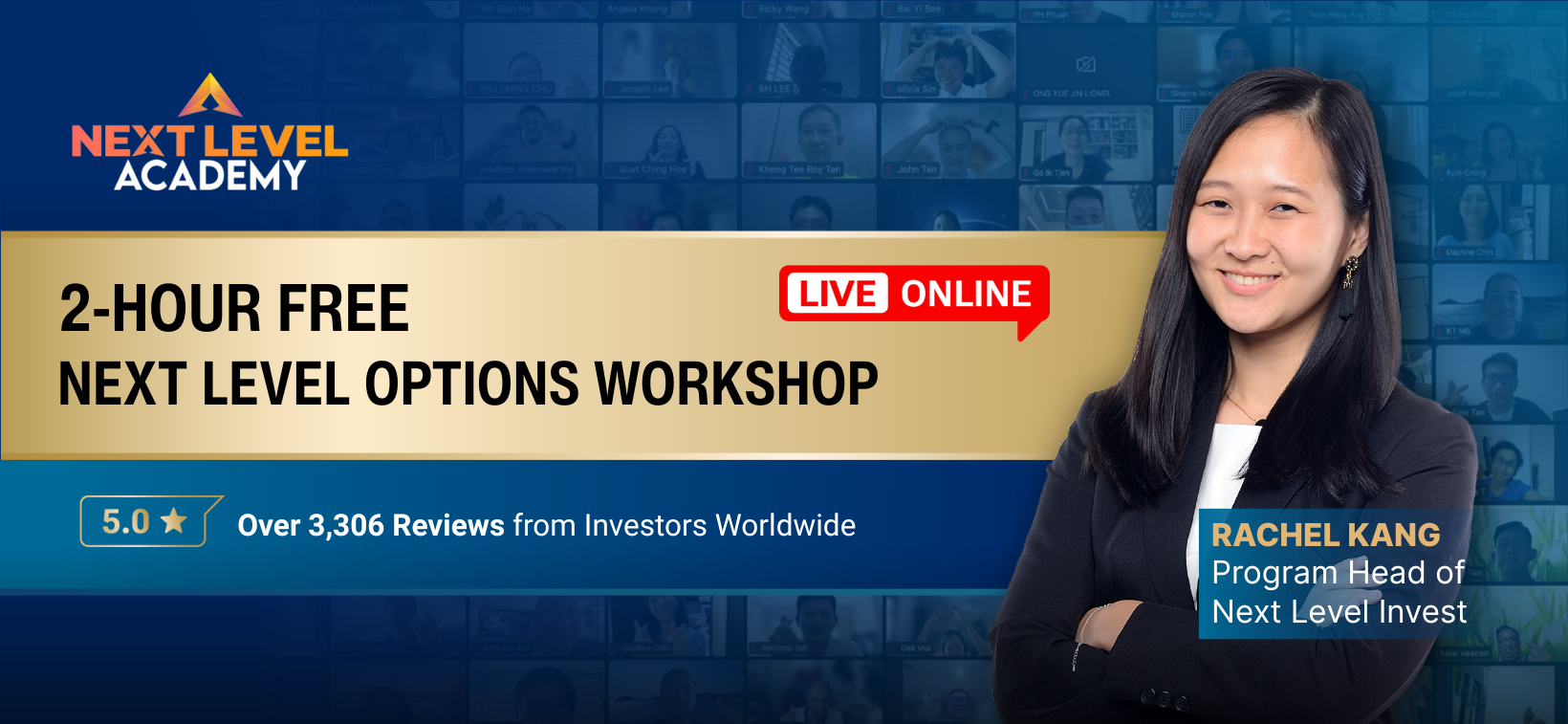- Live Life Grow Wealth
- Posts
- Summary of 7 Days to Smarter Investing: A Beginner’s Journey
Summary of 7 Days to Smarter Investing: A Beginner’s Journey

Today’s Headline
Over the past week, we’ve gone on a journey together—starting with the basics of what investing really means and why it’s different from saving. We explored how compound interest quietly builds wealth, why balancing risk and reward is the golden rule, and the different types of investments available to you.
We also talked about setting clear financial goals, avoiding the most common mistakes beginners make, and finally, how to start small but stay consistent to build real momentum.
If you take one thing away from this series, let it be this: investing isn’t about doing everything perfectly—it’s about starting early, staying consistent, and letting time work for you. Every step you take, no matter how small, moves you closer to financial freedom.
"Boost your investment strategy by unlocking the power of CTV advertising with Roku Ads Manager—learn how to maximize returns this holiday season. Click here to explore!"
Find your customers on Roku this Black Friday
As with any digital ad campaign, the important thing is to reach streaming audiences who will convert. To that end, Roku’s self-service Ads Manager stands ready with powerful segmentation and targeting options. After all, you know your customers, and we know our streaming audience.
Worried it’s too late to spin up new Black Friday creative? With Roku Ads Manager, you can easily import and augment existing creative assets from your social channels. We also have AI-assisted upscaling, so every ad is primed for CTV.
Once you’ve done this, then you can easily set up A/B tests to flight different creative variants and Black Friday offers. If you’re a Shopify brand, you can even run shoppable ads directly on-screen so viewers can purchase with just a click of their Roku remote.
Bonus: we’re gifting you $5K in ad credits when you spend your first $5K on Roku Ads Manager. Just sign up and use code GET5K. Terms apply.
Day 1: What Is Investing? (And Why It’s Different From Saving)
When I was younger, I thought saving and investing were the same thing. Both meant putting money aside, right? But later, I learned they’re very different. Saving is about safety, while investing is about growth.
When you save, you usually put your money in a bank. It sits there, protected, but it grows very slowly. When you invest, you put your money to work. Instead of sitting still, it has the chance to grow, multiply, and build wealth.
Think of it like this: Saving is planting your money in a pot and keeping it indoors. It’s safe, but it doesn’t grow much. Investing is planting your money in a field where it can get sunlight, water, and nutrients. It grows into something much bigger—but it also faces weather, storms, and risks.
The big difference? Saving protects. Investing builds. And if we want to grow our wealth and live comfortably in the future, investing is the road we must take.
Day 2: How Compound Interest Builds Wealth Over Time
There’s a saying I love: “Compound interest is the eighth wonder of the world.” Once I truly understood it, everything changed for me.
Compound interest is simply earning money on both your original money and the growth it creates. Imagine you invest $100, and it grows to $110. Next time, you’re not just earning on the $100—you’re earning on the $110. Over time, this snowball effect makes your money grow much faster than you expect.
Let’s say you invest $100 a month for 20 years at a 7% average return. You’d end up with over $48,000. But if you keep going for 30 years, it grows to more than $120,000. That’s the power of compounding—the longer you leave it, the stronger it gets.
The secret isn’t just putting money in—it’s giving it time. The earlier you start, the more powerful compounding becomes. That’s why the best time to start is now.
Day 3: Risk vs. Reward — The Golden Balance in Investing
Whenever we talk about investing, two words always come up: risk and reward. At first, I thought risk was something to avoid. But I soon realized risk is what allows reward to exist.
If you invest in something very safe, like a savings account, the risk is low. But so is the reward. If you invest in something more exciting, like stocks, the reward can be much higher—but so can the risk.
The key is balance. You don’t want to avoid risk completely, but you don’t want to take so much risk that you lose sleep at night. A good investor learns how to spread risk across different types of investments. This way, even if one thing doesn’t do well, the others balance it out.
The golden rule is this: Take enough risk to grow, but not so much that you can’t stay consistent.
Day 4: Types of Investments — Stocks, Bonds, ETFs, Funds Explained Simply
When I first heard the words stocks, bonds, and ETFs, I felt overwhelmed. It all sounded complicated. But once I broke it down, I realized it’s actually simple.
Stocks – You own a piece of a company. If the company does well, you benefit. If not, you share the risk.
Bonds – You’re lending money to a company or government. They promise to pay you back with interest. Safer than stocks, but usually lower returns.
ETFs (Exchange-Traded Funds) – A basket of investments bundled into one. Instead of buying one stock, you buy a whole mix. This spreads your risk.
Mutual Funds – Similar to ETFs, but often managed by professionals who pick investments for you.
Think of it like food. Stocks are like buying single ingredients. Bonds are like ordering something simple but filling. ETFs and mutual funds are like buying a mixed meal—it gives you variety without needing to cook every dish yourself.
Day 5: How to Set Financial Goals Before You Invest
Before you invest, you need to know why you’re investing. Otherwise, it’s like going on a trip without knowing the destination.
Ask yourself:
Am I investing for retirement?
Am I saving for a house?
Do I want an emergency fund?
Or do I simply want to grow wealth for the future?
Once you know your goals, you can match your investments to them. If your goal is short-term (like buying a car in two years), choose something safer. If it’s long-term (like retirement), you can afford more risk for bigger growth.
Your goals guide your plan. Without them, investing feels confusing. With them, it feels clear and purposeful.
Become an email marketing GURU.
Join us for the world’s largest FREE & VIRTUAL email marketing conference.
Two full days of email marketing tips & trends, famous keynote speakers (Nicole Kidman!), DJ’s, dance contests & networking opportunities.
Here are the details:
100% Free
25,000+ Marketers
November 6th & 7th
Don’t miss out! Spots are LIMITED!
Day 6: Common Investing Mistakes Beginners Make
When I started investing, I made mistakes. And honestly, that’s how I learned. But the good news is, you can learn from my mistakes without repeating them.
Here are some common ones:
Chasing quick wins – Trying to get rich overnight usually ends in losses.
Not diversifying – Putting all your money into one stock or asset is dangerous.
Investing without research – Following tips without understanding is risky.
Letting emotions take over – Fear and greed can ruin smart decisions.
Stopping when the market drops – Markets go up and down. Consistency matters more.
Mistakes are part of the journey, but if you avoid these, you’ll already be ahead of most beginners.
Day 7: How to Start With Small Amounts and Build Consistency
Many people think they need thousands of dollars to start investing. The truth? You can start with as little as $20. The most important thing is not the amount—it’s the habit.
Start small, stay consistent, and grow over time. Even if you invest just $50 a month, that’s better than waiting until you “have more.” Over time, those small amounts add up thanks to compounding.
Here’s the trick: automate it. Set up an auto-transfer every month. Treat it like a bill you pay to your future self. When your income grows, increase the amount. This way, your wealth grows steadily without you even thinking about it.
Wealth isn’t built in one big step—it’s built through small, repeated actions. Start small, but start now.
Final Takeaways
Over the last seven days, we’ve walked through the basics of investing together. From understanding what investing really is, to compound growth, to risk, to types of investments, to setting goals, avoiding mistakes, and starting small—you now have the foundation.
The truth is, investing doesn’t have to be complicated. It’s about starting, staying consistent, and letting time work its magic. You don’t need to be perfect—you just need to take action.
👉 My challenge for you: Start today. Choose one small step—whether it’s setting aside $20, opening an account, or writing down your financial goals. Action beats hesitation every time.
Your financial future begins with the decisions you make now. And I believe you’ve got what it takes to grow something incredible.
[Live Life Grow Wealth]
🎓 Free Masterclasses to Unlock Your Investment Potential
Take your money skills to the next level with expert-led workshops designed to help you grow smarter and faster.

Recommendations Section
|
|
|
|
DISCLAIMER
I make no representations, warranties, or guarantees, whether expressed or implied, that the content provided is accurate, complete, or up-to-date. Past performance is not indicative nor a guarantee of future returns.
I am an individual content creator and not regulated or licensed by the Monetary Authority of Singapore (MAS) as I do not provide investment services.
All forms of investments carry risks, including the risk of losing your entire invested amount. Such activities may not be suitable for everyone. You are strongly encouraged to seek advice from a professional financial advisor if you have any doubts or concerns.









